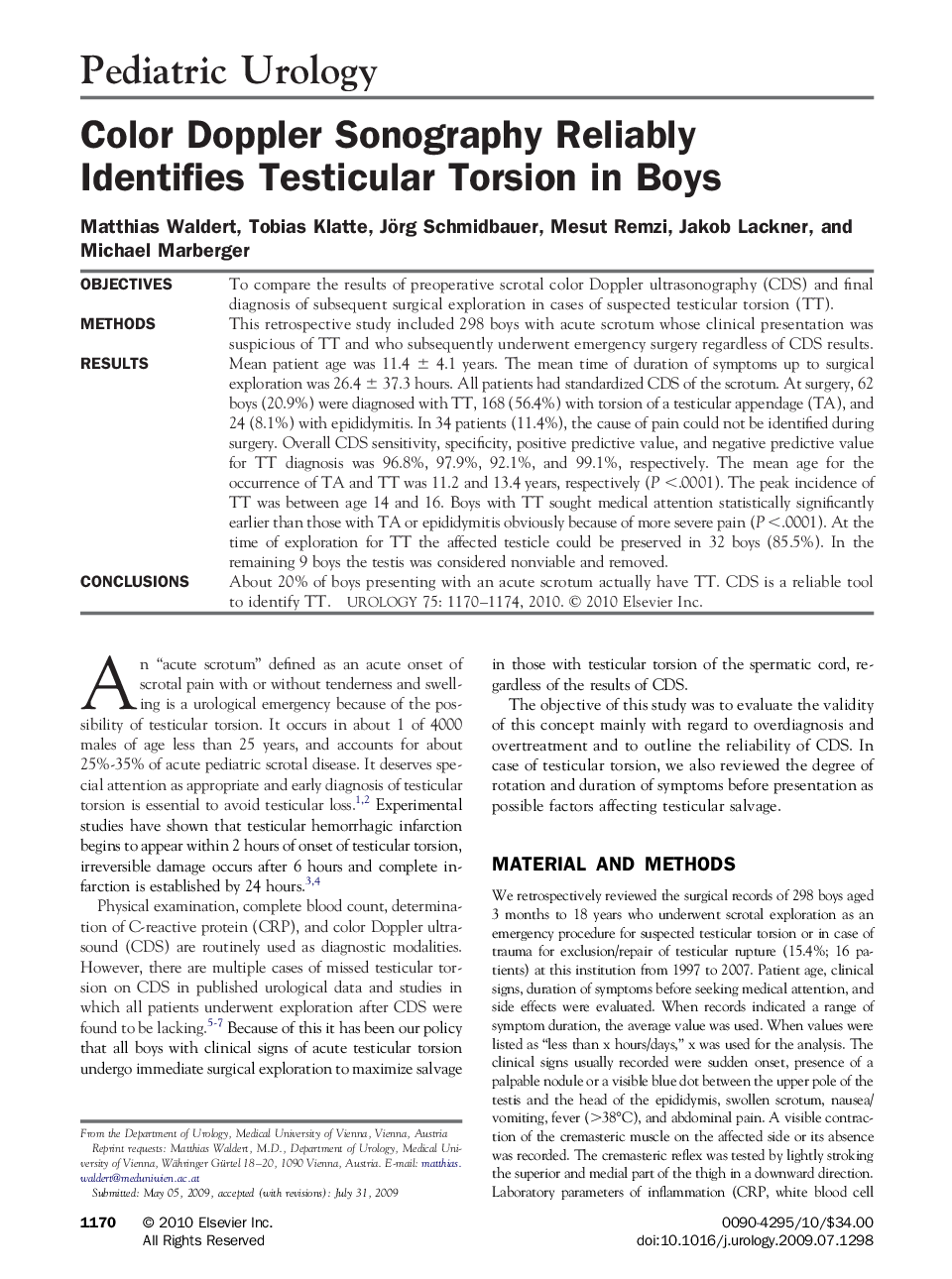| Article ID | Journal | Published Year | Pages | File Type |
|---|---|---|---|---|
| 3901618 | Urology | 2010 | 5 Pages |
ObjectivesTo compare the results of preoperative scrotal color Doppler ultrasonography (CDS) and final diagnosis of subsequent surgical exploration in cases of suspected testicular torsion (TT).MethodsThis retrospective study included 298 boys with acute scrotum whose clinical presentation was suspicious of TT and who subsequently underwent emergency surgery regardless of CDS results.ResultsMean patient age was 11.4 ± 4.1 years. The mean time of duration of symptoms up to surgical exploration was 26.4 ± 37.3 hours. All patients had standardized CDS of the scrotum. At surgery, 62 boys (20.9%) were diagnosed with TT, 168 (56.4%) with torsion of a testicular appendage (TA), and 24 (8.1%) with epididymitis. In 34 patients (11.4%), the cause of pain could not be identified during surgery. Overall CDS sensitivity, specificity, positive predictive value, and negative predictive value for TT diagnosis was 96.8%, 97.9%, 92.1%, and 99.1%, respectively. The mean age for the occurrence of TA and TT was 11.2 and 13.4 years, respectively (P <.0001). The peak incidence of TT was between age 14 and 16. Boys with TT sought medical attention statistically significantly earlier than those with TA or epididymitis obviously because of more severe pain (P <.0001). At the time of exploration for TT the affected testicle could be preserved in 32 boys (85.5%). In the remaining 9 boys the testis was considered nonviable and removed.ConclusionsAbout 20% of boys presenting with an acute scrotum actually have TT. CDS is a reliable tool to identify TT.
